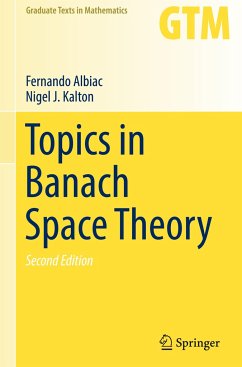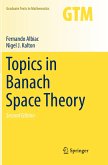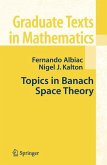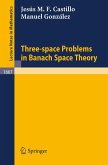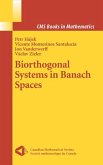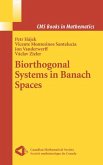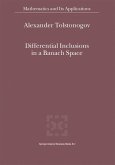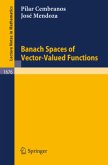This text provides the reader with the necessary technical tools and background to reach the frontiers of research without the introduction of too many extraneous concepts. Detailed and accessible proofs are included, as are a variety of exercises and problems. The two new chapters in this second edition are devoted to two topics of much current interest amongst functional analysts: Greedy approximation with respect to bases in Banach spaces and nonlinear geometry of Banach spaces. This new material is intended to present these two directions of research for their intrinsic importance within Banach space theory, and to motivate graduate students interested in learning more about them.
This textbook assumes only a basic knowledge of functional analysis, giving the reader a self-contained overview of the ideas and techniques in the development of modern Banach space theory. Special emphasis is placed on the study of the classical Lebesgue spaces Lp (and their sequence space analogues) and spaces of continuous functions. The authors also stress the use of bases and basic sequences techniques as a tool for understanding the isomorphic structure of Banach spaces.
From the reviews of the First Edition:
"The authors of the book...succeeded admirably in creating a very helpful text, which contains essential topics with optimal proofs, while being reader friendly... It is also written in a lively manner, and its involved mathematical proofs are elucidated and illustrated by motivations, explanations and occasional historical comments... I strongly recommend to every graduate student who wants to get acquainted with this exciting part of functional analysis the instructive and pleasant reading of this book..."-Gilles Godefroy, Mathematical Reviews
This textbook assumes only a basic knowledge of functional analysis, giving the reader a self-contained overview of the ideas and techniques in the development of modern Banach space theory. Special emphasis is placed on the study of the classical Lebesgue spaces Lp (and their sequence space analogues) and spaces of continuous functions. The authors also stress the use of bases and basic sequences techniques as a tool for understanding the isomorphic structure of Banach spaces.
From the reviews of the First Edition:
"The authors of the book...succeeded admirably in creating a very helpful text, which contains essential topics with optimal proofs, while being reader friendly... It is also written in a lively manner, and its involved mathematical proofs are elucidated and illustrated by motivations, explanations and occasional historical comments... I strongly recommend to every graduate student who wants to get acquainted with this exciting part of functional analysis the instructive and pleasant reading of this book..."-Gilles Godefroy, Mathematical Reviews
"This excellent book is highly recommended to all graduate students and up who want to experience the beauty of the Banach space theory." (Marián Fabian, Mathematical Reviews, June, 2017)
From the reviews: "Geometry of Banach Spaces is a quite technical field which requires a fair practice of sharp tools from every domain of analysis. ... The authors of the book under review succeeded admirably in creating a very helpful text, which contains essential topics with optimal proofs, while being reader friendly. ... the book is essentially self-contained. It is also written in a lively manner, and its involved mathematical proofs are elucidated and illustrated ... . I strongly recommend to every graduate student ... ." (Gilles Godefroy, Mathematical Reviews, Issue 2006 h) "This book gives a self-contained overview of the fundamental ideas and basic techniques in modern Banach space theory. ... In this book one can find a systematic and coherent account of numerous theorems and examples obtained by many remarkable mathematicians. ... It is intended for graduate students and specialists in classical functional analysis. ... I think that any mathematician who is interested in geometry of Banach spaces should ... look over this book. Undoubtedly, the book will be a useful addition to any mathematical library." (Peter Zabreiko, Zentralblatt MATH, Vol. 1094 (20), 2006) "This book provides a sequel treatise on classical and modern Banach space theory. It is mainly focused on the study of classical Lebesgue spaces Lp, sequence spaces lp, and Banach spaces of continuous functions. ... There is a comprehensive bibliography (225 items). The book is understandable and requires only a basic knowledge of functional analysis ... . It can be warmly recommended to a broad spectrum of readers - to graduate students, young researchers and also to specialists in the field." (EMS Newsletter, March, 2007)

